Stress Mechanism and Energy Dissipation Performance Optimization of Prefabricated ECC/RC Combined Shear Walls under Low Cyclic Loading
Abstract
:1. Introduction
2. Establishment of the Finite Element Model
2.1. Material Constitutive Relations
2.2. Element Selection and Model Building
2.3. Simulation Method of Prefabricated Joint
2.3.1. Horizontal Friction and Vertical Compression between Concrete and Concrete and between Concrete and ECC
2.3.2. Interfacial Bonding between Steel and Concrete, Steel and ECC
2.3.3. The Pin-Cut Key Effect and Tension-Compression Effect of Longitudinally Connecting Steel Reinforcement
2.4. Boundary Conditions and Loading Methods
2.5. Meshing and Analytical Calculations
2.6. Introduction of Damage Criterion
2.7. Comparison of Calculation Results and Experimental Results
3. Analysis of the Stress and Damage Mechanism
3.1. Stress Distribution of Concrete and ECC
3.2. Compression Damage of Concrete and ECC
3.3. Crack Distribution of Concrete and ECC
3.4. Stress Distribution of the Steel Bars
3.5. Structural and Fabricated Joint Displacement
4. Seismic Energy Dissipation Performance Optimization
4.1. Parameter Value
4.2. Load–Displacement Hysteresis Curves under Low Cyclic Loading
4.3. Seismic Energy Dissipation Capacity with Different Ranges of ECC
5. Conclusions
Author Contributions
Funding
Institutional Review Board Statement
Informed Consent Statement
Data Availability Statement
Conflicts of Interest
References
- Jang, J.; Han, S.W. Experiments of Diagonal Reinforced Concrete Coupling Beams under Quasi-static Cyclic Loading. J. Archit. Inst. Korea 2020, 36, 133–140. [Google Scholar]
- Park, W.S.; Kang, T.H.K.; Kim, S.; Yun, H.D. Seismic Performance of Moderately Short Concrete Coupling Beams with Various Reinforcements. ACI Struct. J. 2020, 117, 141–154. [Google Scholar]
- Zeng, H.Y.; Gitomarsono, J.; Kawatu, A.J.; Chan, W.T.; Chiu, S.C.; Cheng, M.Y. Cyclic Behavior of Short Reinforced Concrete Coupling Beams Confined by Steel Plates. ACI Struct. J. 2022, 119, 263–276. [Google Scholar]
- Li, V.C. Engineered cementitious composites (ECC) material, structural, and durability performance. In Concrete Construction Engineering Handbook; Nawy, E., Ed.; Chapter 24; CRC Press: Boca Raton, FL, USA, 2008; pp. 1–78. [Google Scholar]
- Yu, J.; Yao, J.; Lin, X.; Li, H.; Lam, J.Y.; Leung, C.K.; Shih, K. Tensile performance of sustainable Strain-Hardening Cementitious Composites with hybrid PVA and recycled PET fibers. Cem. Concr. Res. 2018, 107, 110–123. [Google Scholar] [CrossRef]
- Yu, K.Q.; Yu, J.T.; Dai, J.G.; Lu, Z.D.; Shah, S.P. Development of ultra-high performance engineered cementitious composites using polyethylene (PE) fibers. Constr. Build. Mater. 2018, 158, 217–227. [Google Scholar] [CrossRef]
- Abd Elmoaty, A.E.M.; Morsy, A.M.; Harraz, A.B. Effect of Fiber Type and Volume Fraction on Fiber Reinforced Concrete and Engineered Cementitious Composite Mechanical Properties. Buildings 2022, 12, 2108. [Google Scholar] [CrossRef]
- Abouhussien, A.A.; Hassan, A.A.; Ismail, M.K.; AbdelAleem, B.H. Evaluating the cracking behavior of ECC beam-column connections under cyclic loading by acoustic emission analysis. Constr. Build. Mater. 2019, 215, 958–968. [Google Scholar] [CrossRef]
- Hao, Z.; Lu, C.; Li, Z. Highly accurate and automatic semantic segmentation of multiple cracks in engineered cementitious composites (ECC) under dual pre-modification deep-learning strategy. Cem. Concr. Res. 2023, 165, 107066. [Google Scholar] [CrossRef]
- Huang, B.T.; Wu, J.Q.; Yu, J.; Dai, J.G.; Leung, C.K.; Li, V.C. Seawater sea-sand engineered/strain-hardening cementitious composites (ECC/SHCC): Assessment and modeling of crack characteristics. Cem. Concr. Res. 2021, 140, 106292. [Google Scholar] [CrossRef]
- Gu, D.; Pan, J.; Mustafa, S.; Huang, Y.; Luković, M. Shear transfer mechanism in reinforced engineered cementitious composite (ECC) beams: Quantification of Vs and Vc. Eng. Struct. 2022, 261, 114282. [Google Scholar] [CrossRef]
- Meng, D.; Lee, C.K.; Zhang, Y.X. Structural behavior of reinforced polyvinyl alcohol engineered cementitious composite (PVA-ECC) beams under static and fatigue loadings. In Advances in Engineered Cementitious Composites; Woodhead Publishing: Sawston, UK, 2022; pp. 161–208. [Google Scholar]
- Abbas, A.A.; Arna’Ot, F.H.; Abid, S.R.; Özakça, M. Flexural behavior of ECC hollow beams incorporating different synthetic fibers. Front. Struct. Civ. Eng. 2021, 15, 399–411. [Google Scholar] [CrossRef]
- Amiri, M.; Esfahani, M.R. Effect of using Engineered Cementitious Composites (ECC) on failure behavior of flat slab-column connections. Structures 2023, 47, 2397–2407. [Google Scholar] [CrossRef]
- Zhang, Z.; Qian, S.; Ma, H. Investigating mechanical properties and self-healing behavior of micro-cracked ECC with different volume of fly ash. Constr. Build. Mater. 2014, 52, 17–23. [Google Scholar] [CrossRef]
- Zhang, Z.Y.; Ding, R.; Fan, J.S.; Nie, X.; Zhang, J. Seismic performance and shear strength of coupling beams using engineered cementitious composites with different reinforcement layouts. Eng. Struct. 2020, 219, 110895. [Google Scholar] [CrossRef]
- Suryanto, B.; Tambusay, A.; Suprobo, P.; Bregoli, G.; Aitken, M.W. Seismic performance of exterior beam-column joints constructed with engineered cementitious composite: Comparison with ordinary and steel fibre reinforced concrete. Eng. Struct. 2022, 250, 113377. [Google Scholar] [CrossRef]
- Cai, J.; Pan, J.; Xu, L.; Li, G.; Ma, T. Mechanical behavior of RC and ECC/RC composite frames under reversed cyclic loading. J. Build. Eng. 2021, 35, 102036. [Google Scholar] [CrossRef]
- Khan, F.A.; Khan, S.W.; Khan, W. Seismic performance of RC-ECC composite frame by eliminating shear reinforcement in beam-column joint: Shake table tests. Adv. Struct. Eng. 2022, 25, 2966–2980. [Google Scholar] [CrossRef]
- Khan, F.A.; Rashid, M.; Khan, S.W.; Rizwan, M.; Badrashi, Y.I.; Fahim, M.; Gul, A. Comparative seismic performance assessment of RC and RC/ECC hybrid frame structures: A shake table study. Innov. Infrastruct. Solut. 2022, 7, 1–17. [Google Scholar] [CrossRef]
- Ye, B.; Wang, H.; Ma, Y.; Pan, P. Seismic performance of flexure-dominated reinforced-engineered cementitious composites coupled shear wall. Eng. Struct. 2022, 272, 114992. [Google Scholar] [CrossRef]
- Yang, J.; Liang, S.; Zhu, X.; Sun, C.; Guo, Z. Seismic behavior of precast concrete coupled shear walls with engineered cementitious composite (ECC) in the critical cast-in-place regions. Sci. China Technol. Sci. 2017, 60, 1244–1254. [Google Scholar] [CrossRef]
- GB 50010-2010; Code for Design of Concrete Structures (2015 Edition). China Architecture & Building Press: Beijing, China, 2015.
- Zhang, J.; Wang, Q.; Hu, S.; Wang, C. Parameters verification of concrete damaged plastic model of ABAQUS. Build. Struct. 2008, 38, 127–130. [Google Scholar]
- Yuan, F.; Pan, J.; Wu, Y. Numerical study on flexural behaviors of steel reinforced engineered cementitious composite (ECC) and ECC/concrete composite beams. Sci. China Technol. Sci. 2014, 57, 637–645. [Google Scholar] [CrossRef]
- Amrane, M.N.; Sidoroff, F. Residual modal energy evaluating of fatigue damaged composite structure. Mechanics 2011, 17, 45–49. [Google Scholar] [CrossRef] [Green Version]
- Kien, D.N.; Chen, X.; Zhuang, X.; Rabczuk, T. Radial Basis Function Based Finite Element Method for Bending, Vibration and Buckling Analysis of Laminated Composite Mindlin-Reissner Plates. In Advances in Engineering Research and Application, Proceedings of the International Conference on Engineering Research and Applications, ICERA 2022, Thai Nguyen, Vietnam, 1–2 December 2022; Springer International Publishing: Cham, Switzerland, 2023; pp. 806–822. [Google Scholar]
- Palieraki, V.; Vintzileou, E.; Silva, J.F. Behavior of RC interfaces subjected to shear: State-of-the art review. Constr. Build. Mater. 2021, 306, 124855. [Google Scholar] [CrossRef]
- Zhou, L.; Li, X.; Yan, Q. Performance of Grouting Sleeve-Connected Prefabricated Beams Subjected to Impact Loading. Buildings 2022, 12, 2146. [Google Scholar] [CrossRef]
- Hemamalini, S.; Vidjeapriya, R.; Jaya, K.P. Performance of Precast Shear Wall Connections Under Monotonic and Cyclic Loading: A State-of-the-Art Review. Iran. J. Sci. Technol. Trans. Civ. Eng. 2021, 45, 1307–1328. [Google Scholar] [CrossRef]
- JGJ/T 101-2015; Specification for Seismic Test of Buildings. China Architecture & Building Press: Beijing, China, 2015.
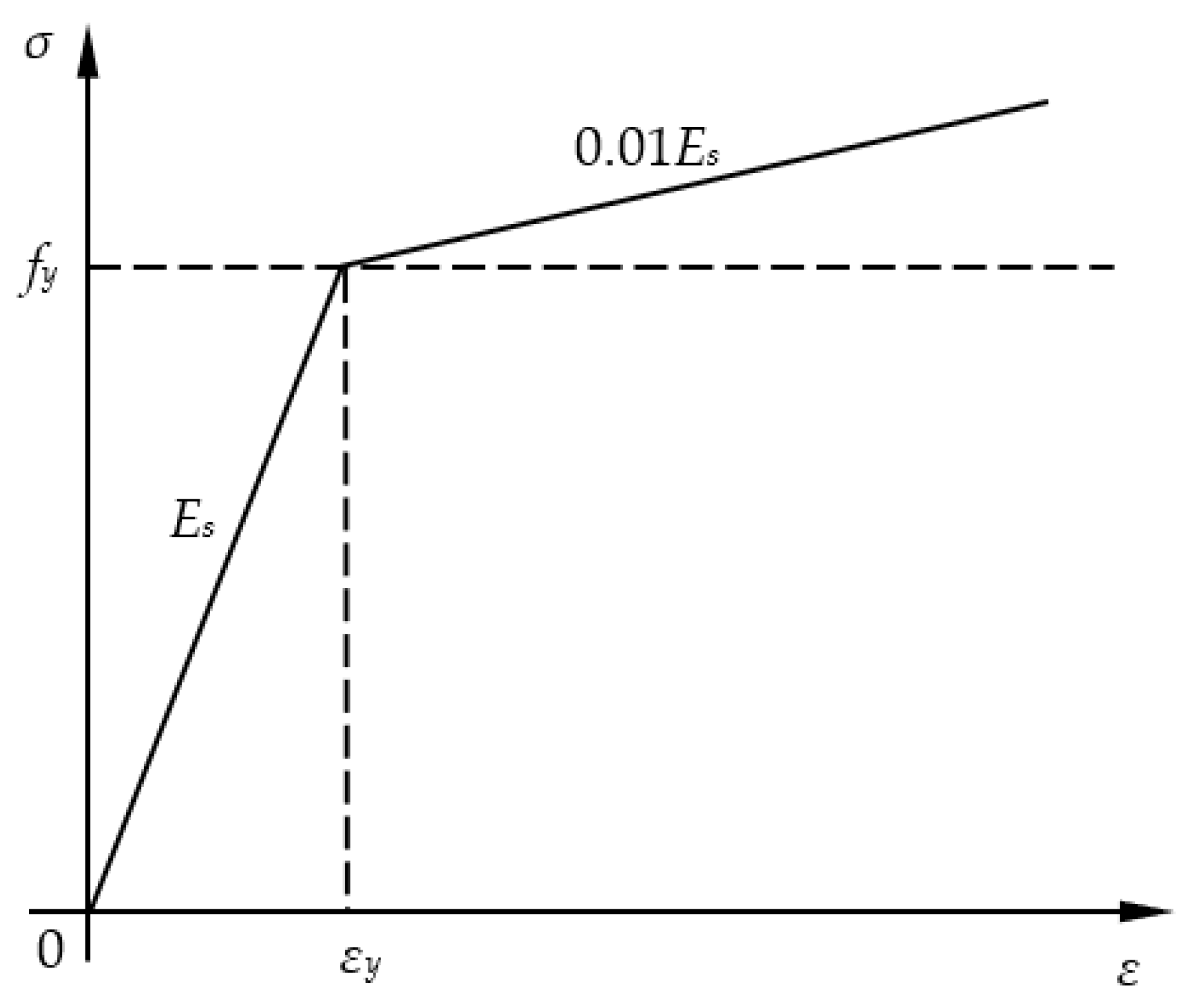
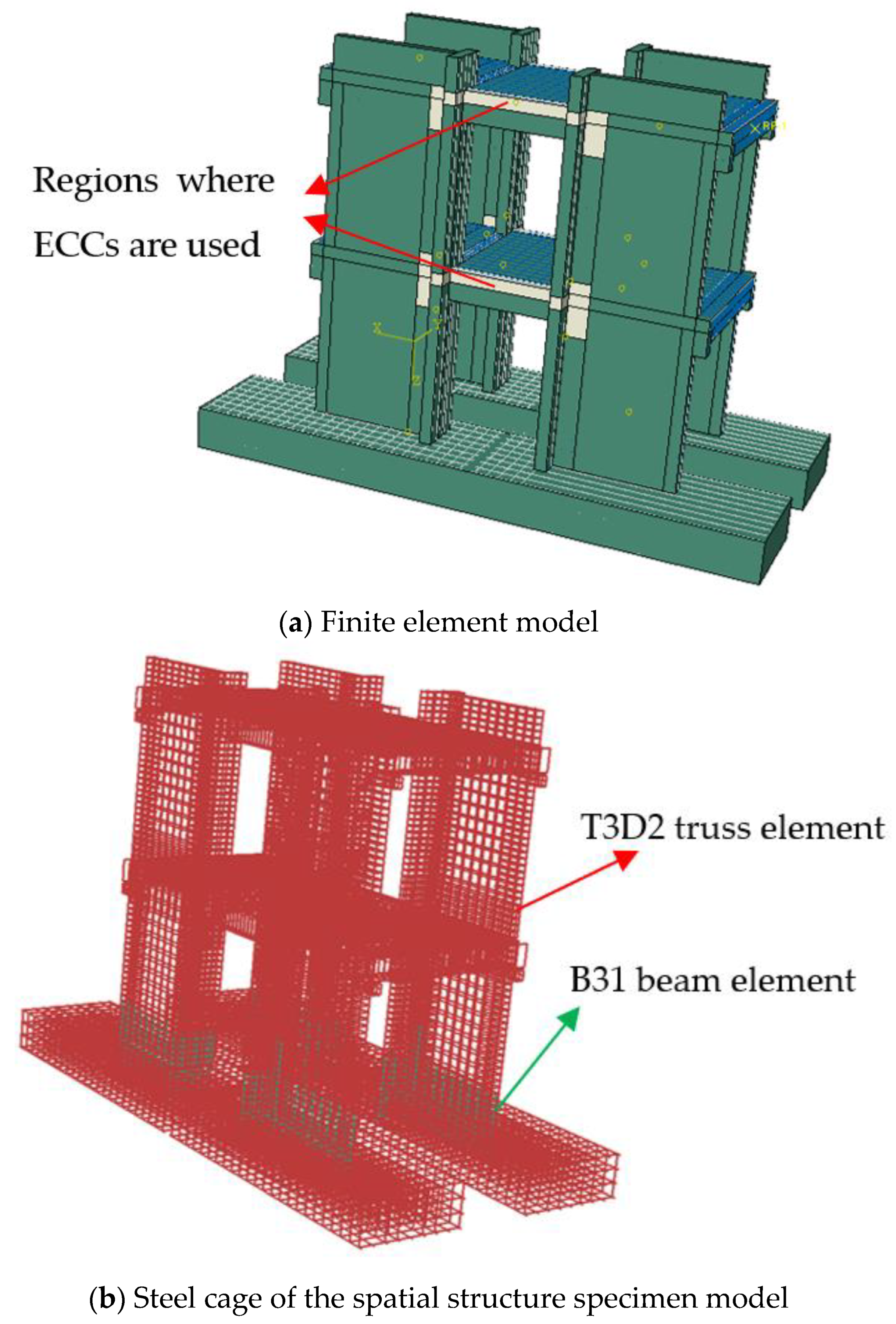
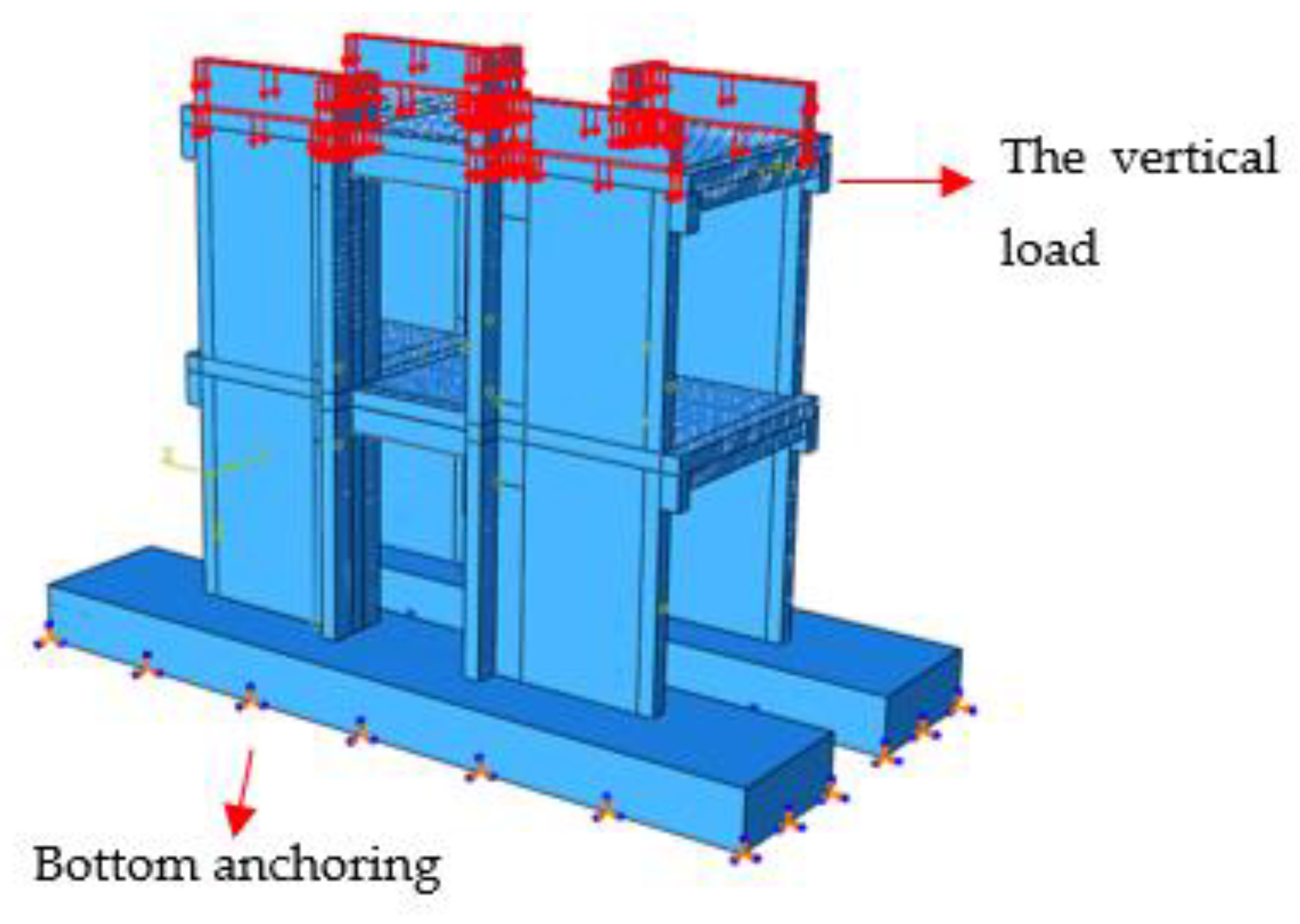


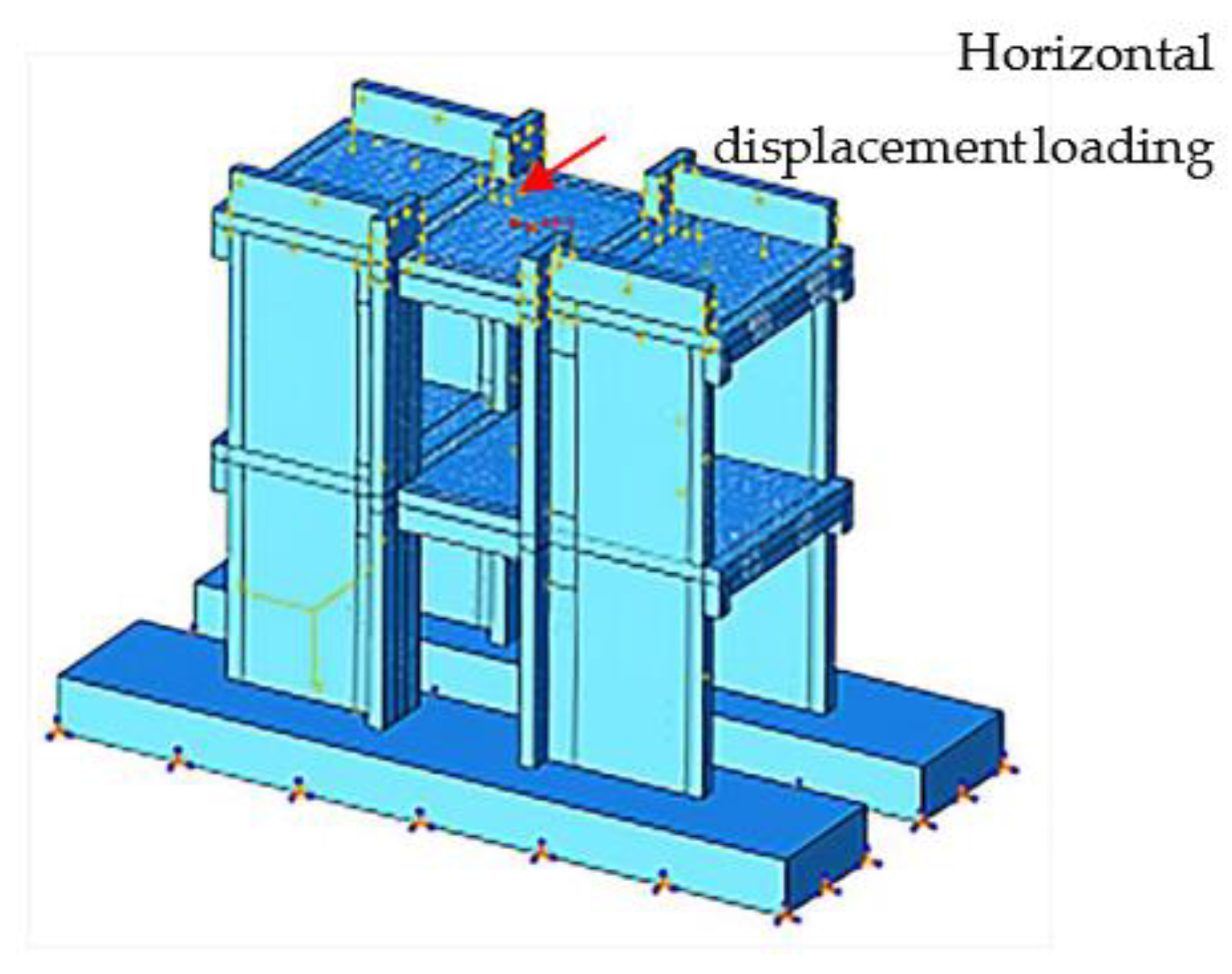
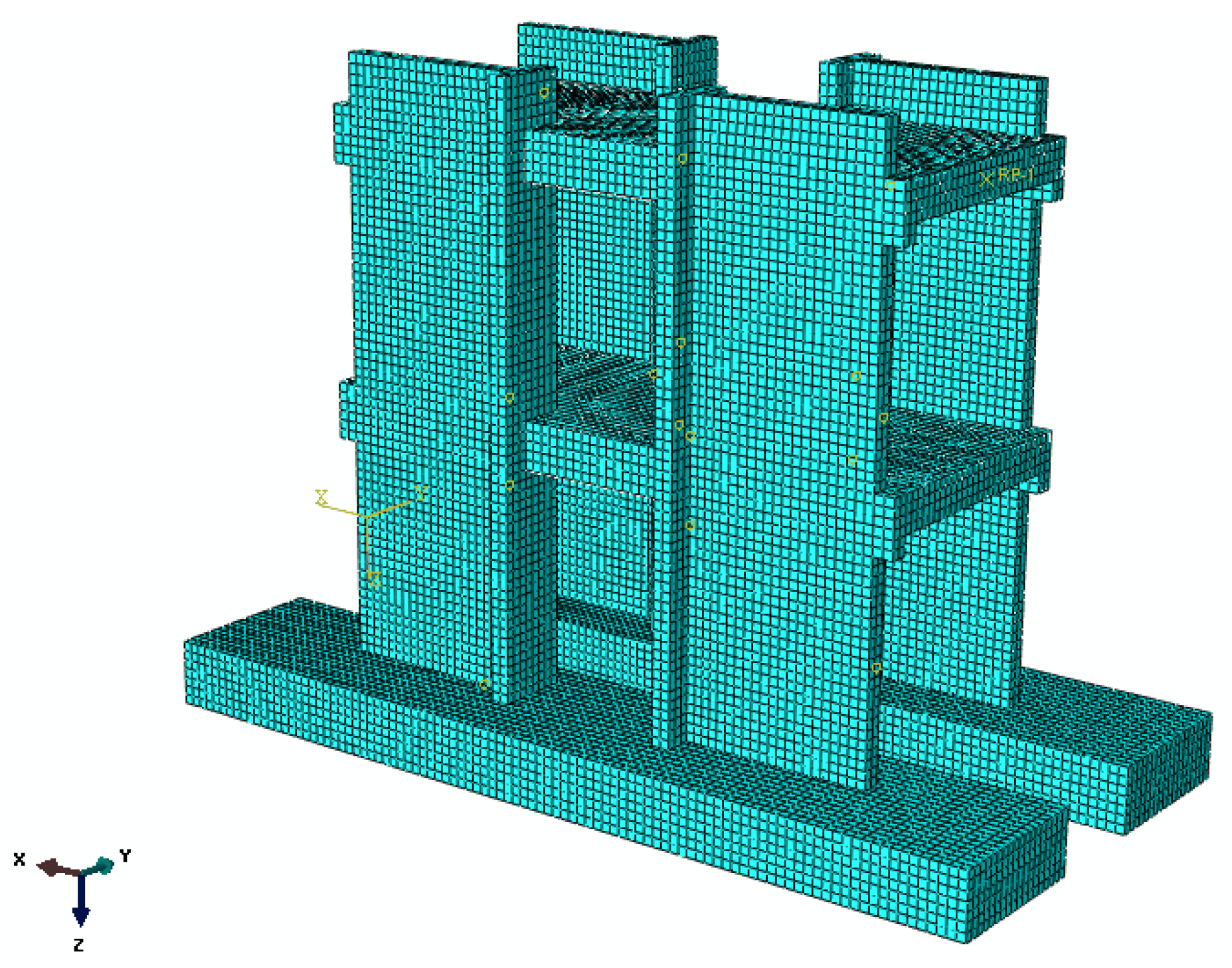
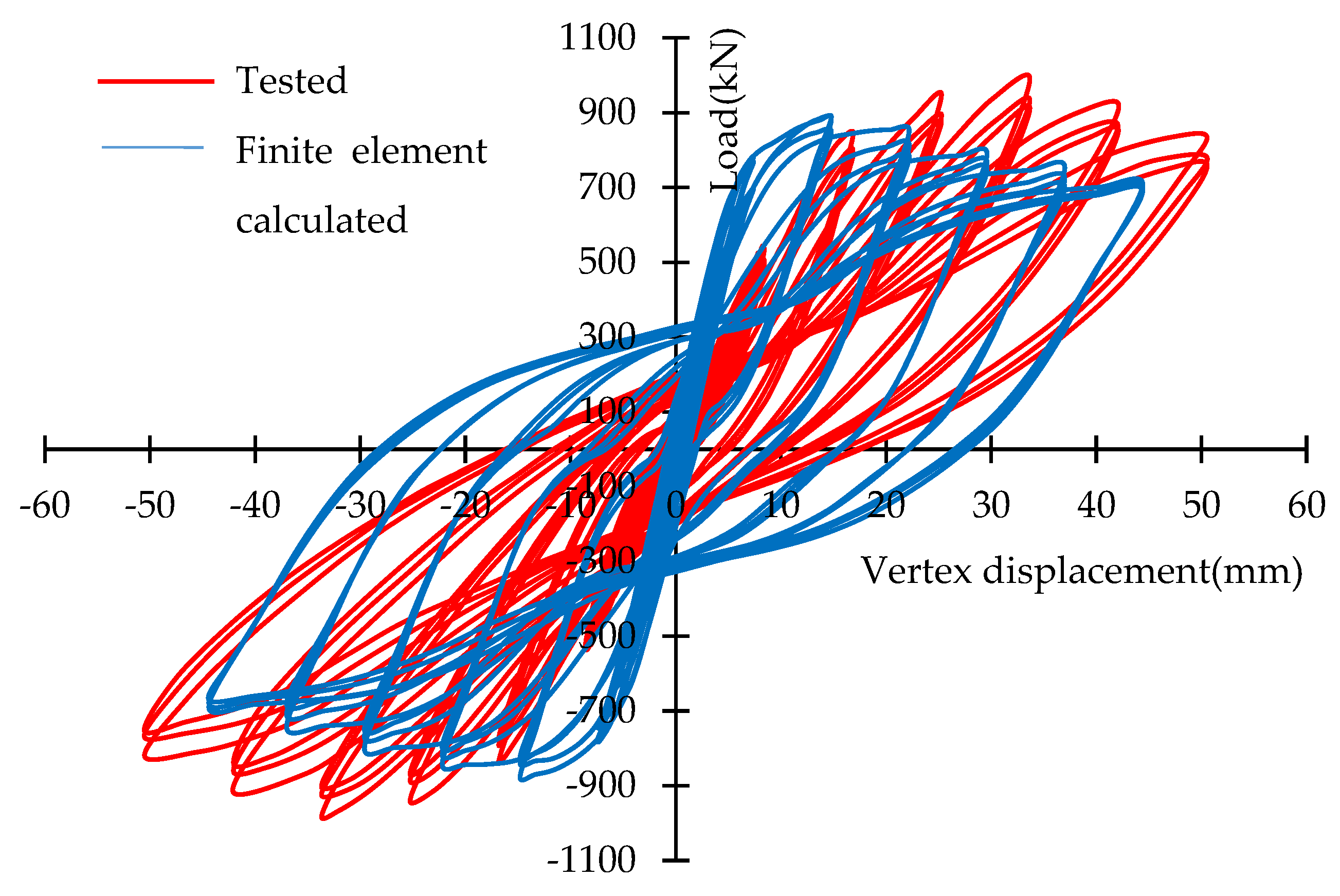


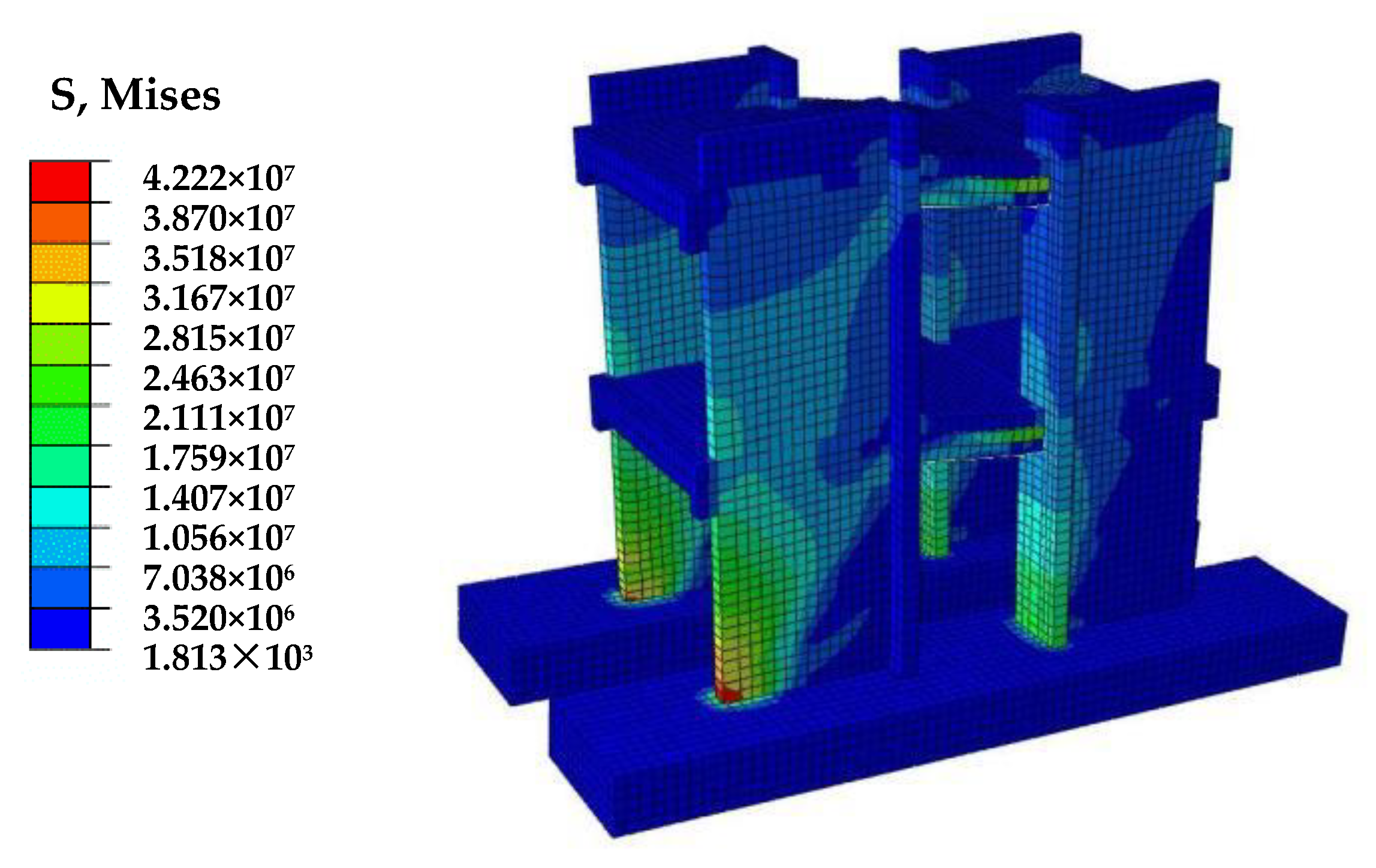
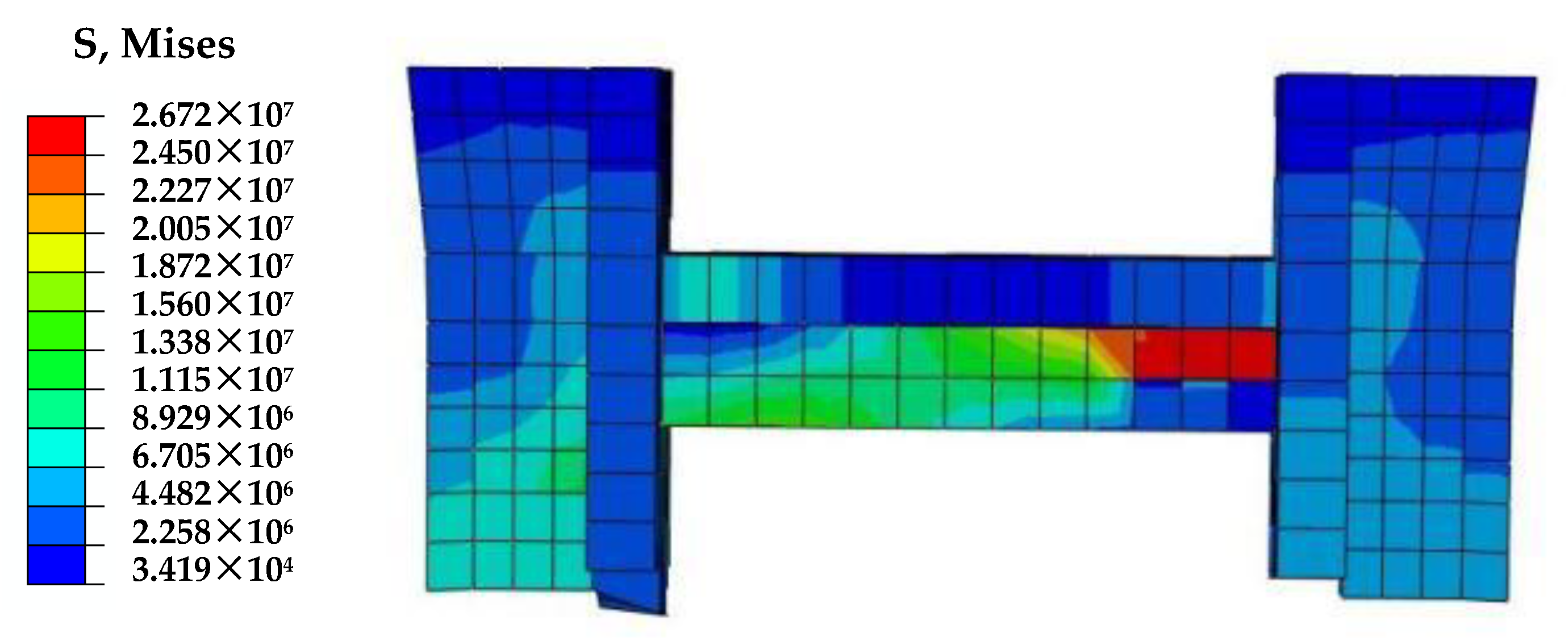
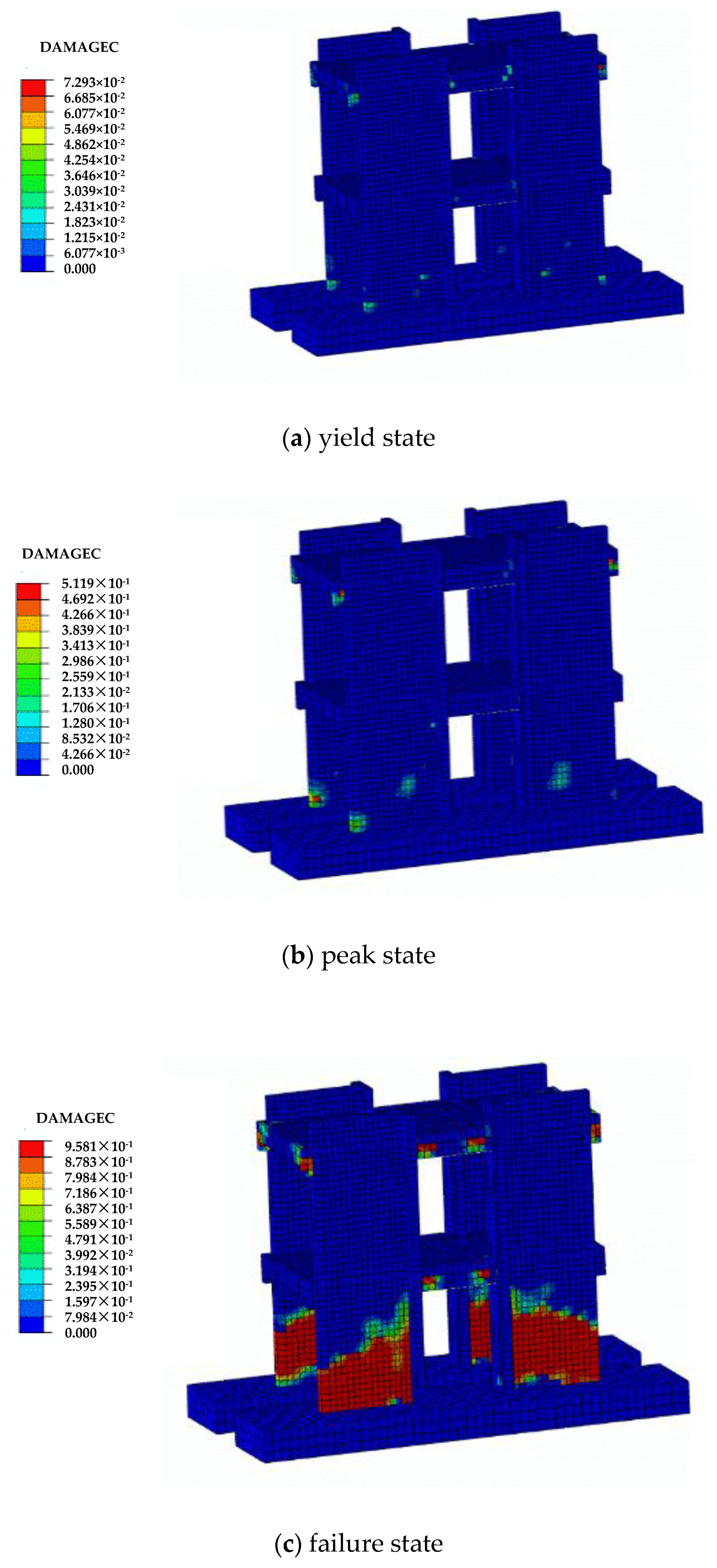
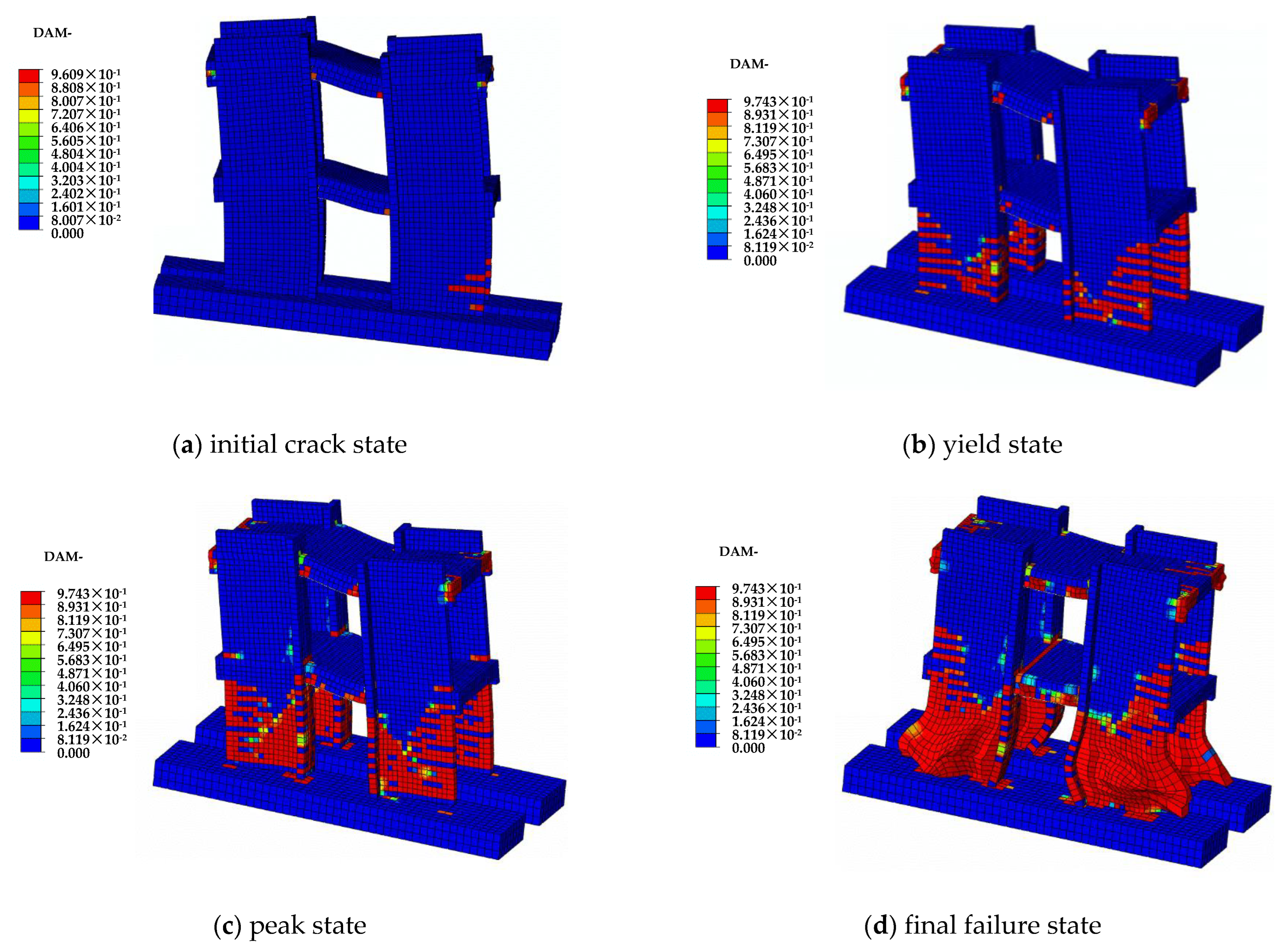

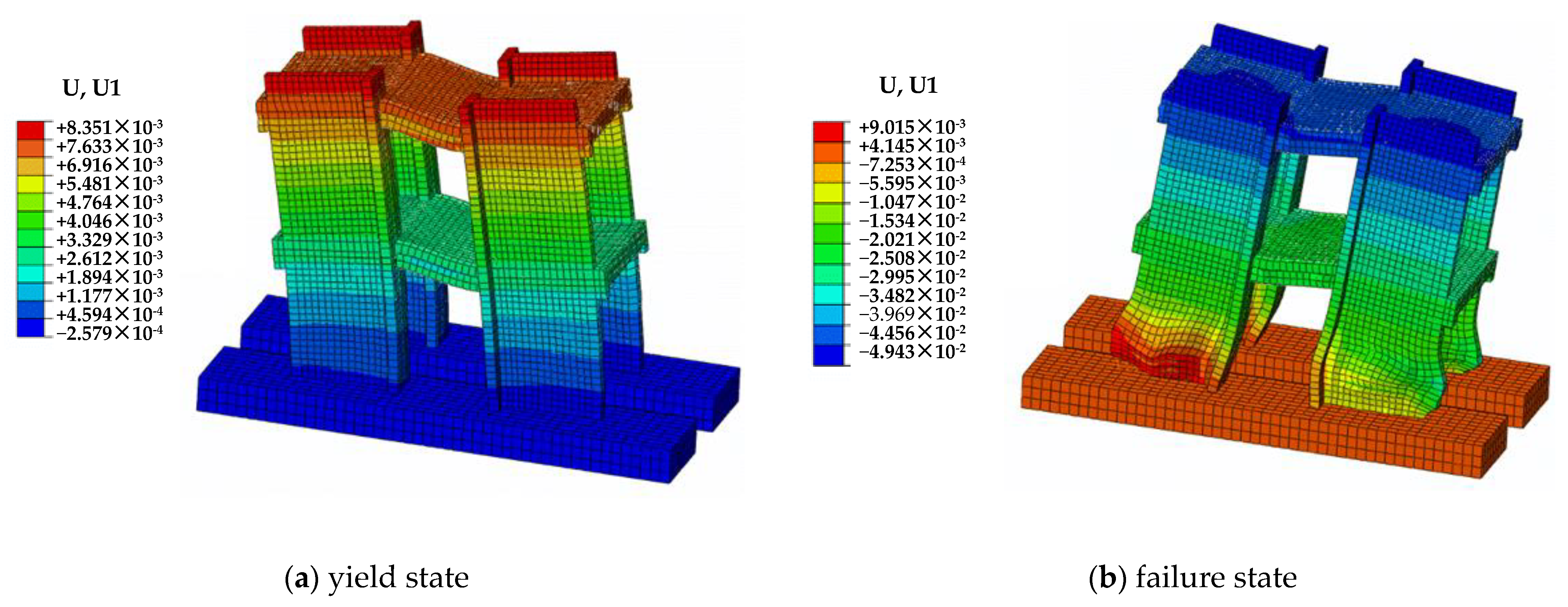




| Classification of Specimens | Application Area Height of ECC in the Bottom of the Walls |
|---|---|
| Specimen 1 | 0 |
| Specimen 2 | 200 mm |
| Specimen 3 | 400 mm |
| Specimen 4 | 600 mm |
| Specimen 5 | 800 mm |
| Displacement Loading Level | Number of Cycles | Specimen 1 | Specimen 2 | Specimen 3 | Specimen 4 | Specimen 5 | |||||
|---|---|---|---|---|---|---|---|---|---|---|---|
| Single Cycle | Cumulative | Single Cycle | Cumulative | Single Cycle | Cumulative | Single Cycle | Cumulative | Single Cycle | Cumulative | ||
| 1Δ | 1 | 1287.7 | 1287.7 | 1262.3 | 1262.3 | 1797.9 | 1797.9 | 1602.9 | 1602.9 | 1565.5 | 1565.5 |
| 2 | 658.6 | 1946.3 | 525.2 | 1787.5 | 851.8 | 2649.7 | 656.6 | 2259.5 | 626.6 | 2192.1 | |
| 3 | 237.5 | 2183.8 | 322.8 | 2110.3 | 496.2 | 3145.9 | 419.7 | 2679.2 | 443.6 | 2635.7 | |
| 2Δ | 1 | 8062.9 | 10,246.7 | 7793.2 | 9903.5 | 8679.7 | 11,825.6 | 8762.9 | 11,442.1 | 8778.5 | 11,414.2 |
| 2 | 5752.8 | 15,999.5 | 5979.1 | 15,882.6 | 7490.8 | 19,316.4 | 7271.9 | 18714 | 7350.2 | 18,764.4 | |
| 3 | 5489.4 | 21,488.9 | 5890.6 | 21,773.2 | 7128.8 | 26,445.2 | 7033.5 | 25,747.5 | 7123.8 | 25,888.2 | |
| 3Δ | 1 | 18,750.3 | 40,239.2 | 18,466.4 | 40,239.6 | 22,147.1 | 48,592.3 | 21,445.9 | 47,193.4 | 22,541.2 | 48,429.4 |
| 2 | 15,991.2 | 56,230.4 | 18,209.2 | 58,448.8 | 21,093.2 | 69,685.5 | 20,843.6 | 68,037 | 21,554.1 | 69,983.5 | |
| 3 | 14,102.2 | 70,332.6 | 15,620.7 | 74,069.5 | 17,704.6 | 87,390.1 | 19,928.6 | 87,965.6 | 19,261.1 | 89,244.6 | |
| 4Δ | 1 | 23,801.8 | 94,134.4 | 26,783.6 | 10,0853.1 | 28,071 | 11,5461.1 | 29,694.5 | 117,660.1 | 30,028.6 | 119,273.2 |
| 2 | 21,502.9 | 115,155.6 | 24,559.5 | 125,412.6 | 25,534.6 | 140,995.7 | 27,267 | 144,927.1 | 27,417.8 | 146,691 | |
| 3 | 21,021.2 | 136,658.5 | 23,933.7 | 149,346.3 | 24,787.2 | 165,782.9 | 25,699.1 | 170,626.2 | 27,392.6 | 174,083.6 | |
| 5Δ | 1 | 31,021.9 | 167,680.4 | 34,183.6 | 183,529.9 | 36,879.5 | 202,662.4 | 37,981.7 | 208,607.9 | 38,830.2 | 212,913.8 |
| 2 | 29,477.4 | 197,157.8 | 33,399.9 | 216,929.8 | 36,651.1 | 239,313.5 | 37,470.7 | 246,078.6 | 37,942.8 | 250,856.6 | |
| 3 | 28,988.5 | 226,146.3 | 33,265.4 | 250,195.2 | 35,885.5 | 275,199 | 36,435.5 | 282,514.1 | 36,794.2 | 287,650.8 | |
| 6Δ | 1 | 40,265.9 | 266,412.2 | 44,441.1 | 294,636.3 | 47,613.3 | 322,812.3 | 49,080.7 | 331,594.8 | 48,801.3 | 336,452.1 |
| 2 | 39,099.7 | 305,511.9 | 43,162.2 | 337,798.5 | 46,066.4 | 368,878.7 | 47,626.8 | 379,221.6 | 47,742.6 | 384,194.7 | |
| 3 | 38,348.8 | 343,860.7 | 42,847.1 | 38,0645.6 | 45,537.2 | 414,415.9 | 47,130.7 | 426,352.3 | 47,340.9 | 431,535.6 | |
| Specimen | Yield Point | Peak Point | ||||
|---|---|---|---|---|---|---|
| Displacement (mm) | Load (kN) | e | Displacement (mm) | Load (kN) | e | |
| Specimen 1 | 6.1 | 666 | 0.32 | 17.9 | 964 | 1.03 |
| Specimen 2 | 6.4 | 682 | 0.29 | 18.3 | 891 | 1.13 |
| Specimen 3 | 6.6 | 685 | 0.40 | 18.5 | 984 | 1.22 |
| Specimen 4 | 6.9 | 686 | 0.33 | 18.9 | 979 | 1.16 |
| Specimen 5 | 7.0 | 687 | 0.32 | 19.5 | 968 | 1.19 |
Disclaimer/Publisher’s Note: The statements, opinions and data contained in all publications are solely those of the individual author(s) and contributor(s) and not of MDPI and/or the editor(s). MDPI and/or the editor(s) disclaim responsibility for any injury to people or property resulting from any ideas, methods, instructions or products referred to in the content. |
© 2023 by the authors. Licensee MDPI, Basel, Switzerland. This article is an open access article distributed under the terms and conditions of the Creative Commons Attribution (CC BY) license (https://creativecommons.org/licenses/by/4.0/).
Share and Cite
Yang, J.; Jiang, L.; Guo, H.; Yao, G. Stress Mechanism and Energy Dissipation Performance Optimization of Prefabricated ECC/RC Combined Shear Walls under Low Cyclic Loading. Buildings 2023, 13, 772. https://doi.org/10.3390/buildings13030772
Yang J, Jiang L, Guo H, Yao G. Stress Mechanism and Energy Dissipation Performance Optimization of Prefabricated ECC/RC Combined Shear Walls under Low Cyclic Loading. Buildings. 2023; 13(3):772. https://doi.org/10.3390/buildings13030772
Chicago/Turabian StyleYang, Jian, Liqiang Jiang, Haizhu Guo, and Guohuang Yao. 2023. "Stress Mechanism and Energy Dissipation Performance Optimization of Prefabricated ECC/RC Combined Shear Walls under Low Cyclic Loading" Buildings 13, no. 3: 772. https://doi.org/10.3390/buildings13030772





